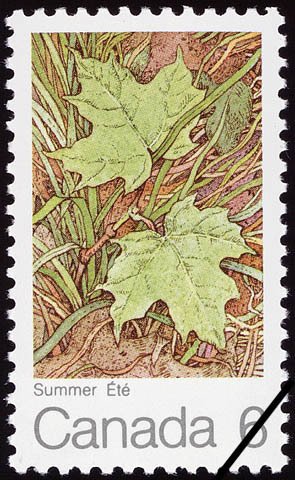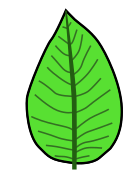Stamp: Summer (Canada 1971)
Summer (Canada 1971)
16 June (Canada ) within release Maple Leaves In Four Seasons goes into circulation Stamp Summer face value 6 Canadian cent
| Stamp Summer in catalogues | |
|---|---|
| Michel: | Mi:CA 483 |
| Stamp Number: | Sn:CA 536 |
Stamp is vertical format.
|
Data entry completed
83%
|
|
|---|---|
| Stamp Summer in digits | |
| Country: | Canada |
| Date: | 1971-06-16 |
| Size: | 24 x 40 |
| Perforation: | 11 |
| Format: | Stamp |
| Face Value: | 6 Canadian cent |
| Print run: | 26440000 |
Stamp Summer it reflects the thematic directions:
Summer is one of the four seasons. It is the hottest season of the year. In some places, summer is the wettest season (with the most rain), and in other places, it is a dry season. Four seasons are found in areas which are not too hot or too cold. Summer happens to the north and south sides of the Earth at opposite times of the year. In the north part of the world, summer takes place between the months of June and September, and in the south part of the world, it takes place between December and March. This is because when the north part of the Earth points towards the Sun, the south part points away.
Flora is the plant life occurring in a particular region or time, generally the naturally occurring or indigenous—native plant life. The corresponding term for animal life is fauna. Flora, fauna and other forms of life such as fungi are collectively referred to as biota. Sometimes bacteria and fungi are also referred to as flora, as in the terms gut flora or skin flora.
A leaf (pl.: leaves) is a principal appendage of the stem of a vascular plant usually borne laterally aboveground and specialized for photosynthesis. Leaves are collectively called foliage, as in "autumn foliage", while the leaves, stem, flower, and fruit collectively form the shoot system. In most leaves, the primary photosynthetic tissue is the palisade mesophyll and is located on the upper side of the blade or lamina of the leaf but in some species, including the mature foliage of Eucalyptus,palisade mesophyll is present on both sides and the leaves are said to be isobilateral. Most leaves are flattened and have distinct upper (adaxial) and lower (abaxial) surfaces that differ in color, hairiness, the number of stomata (pores that intake and output gases), the amount and structure of epicuticular wax and other features. Leaves are mostly green in color due to the presence of a compound called chlorophyll which is essential for photosynthesis as it absorbs light energy from the sun. A leaf with lighter-colored or white patches or edges is called a variegated leaf.



